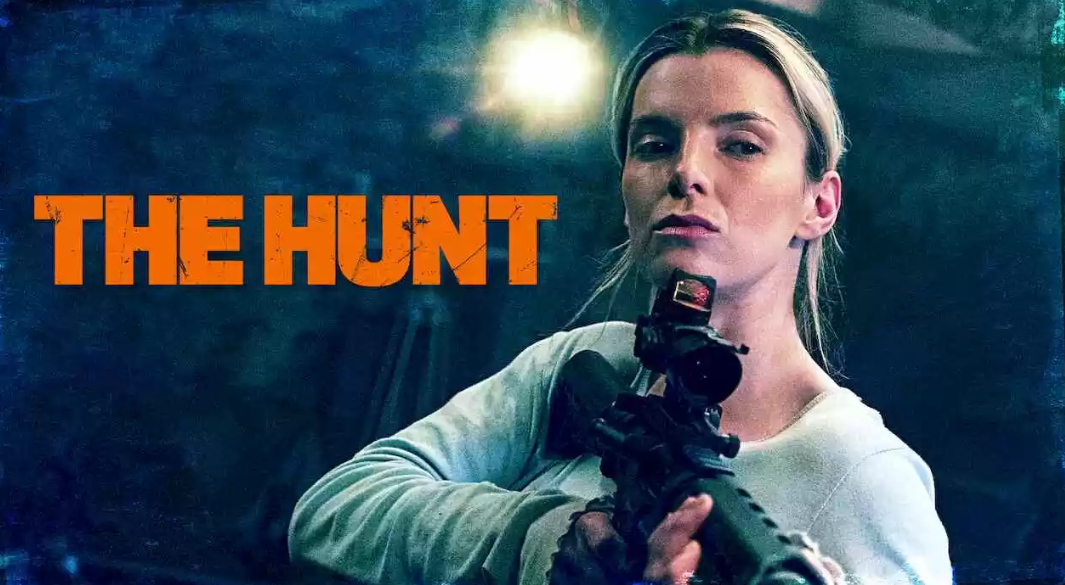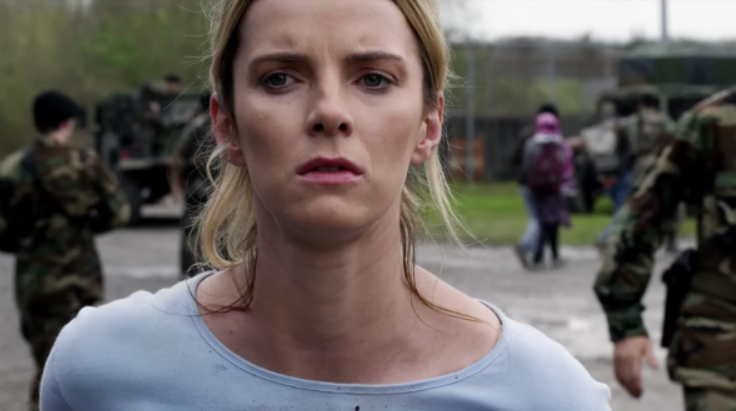The Hunt, a controversial film by director Craig Zobel, intended to provide a provocative social commentary on the polarized landscape of American politics. However, the film often appears to lose sight of its objective and instead delves into a chaotic and violent spectacle, thereby missing a golden opportunity to offer a thought-provoking critique on the state of our society. Its attempt to satirize the extreme ideological divide between liberals and conservatives falls flat as it merely skims the surface of the issue without delving into the root causes or potential solutions.
Rather than providing a nuanced exploration of the current political climate, The Hunt resorts to grotesque violence and caricatured portrayals of both sides, which arguably contribute to further division rather than fostering understanding and dialogue. In the midst of its blood-soaked chaos, the film fails to provide any meaningful insight into the complexities of political ideologies or the human condition. Despite its ambitious premise, The Hunt ends up as more of a missed opportunity than a cutting-edge social commentary.
The film’s inability to balance its satirical elements with a profound analysis of political polarization results in a lackluster and superficial portrayal of a deeply divisive issue. Instead of challenging the audience to question their own beliefs and biases, The Hunt merely reinforces existing stereotypes and prejudices, thereby missing the chance to trigger a much-needed conversation about the dangers of extreme political polarization in contemporary society.

Why The Hunt Falls Short of True Satire
While The Hunt attempts to put forth a satirical commentary on societal and political divides, it falls short due to its inability to offer a nuanced critique or unambiguous point of view. The film often finds itself straddling the line between parody and reality, which dilutes the potency of its satirical elements. Satire, in its true essence, is a powerful tool for social commentary, capable of highlighting societal follies through humor and irony.
However, The Hunt fails to effectively leverage these tools. Instead, it presents a polarizing narrative that lacks the depth and subtlety required for impactful satire. Its characters are portrayed as caricatures, with exaggerated traits that oversimplify complex political ideologies. This results in a narrative that is more divisive than insightful, further contributing to the polarization it aims to ridicule. Furthermore, the film’s excessive violence and gore seem to overshadow its satirical intent, making it difficult for viewers to discern the deeper message behind the bloodshed.
While it’s clear that The Hunt attempts to satirize the current political climate, its heavy-handed approach and lack of nuance hinder it from reaching the heights of true satire. Instead of offering a sharp, insightful critique of societal divides, it merely exploits them for shock value, missing the opportunity to contribute meaningful commentary on the state of society. Thus, The Hunt’s attempt at satire ultimately falls short due to its lack of subtlety and depth, as well as its tendency to prioritize shock value over insightful commentary.
Examining the Film’s The Hunt Approach to Social Critique
The film “The Hunt” is a profound exploration of societal dynamics, wherein a teacher is wrongly accused of a grave misconduct. The narrative of the film provides a stark social critique, piercing through the surface of our societal norms and behaviors. Its approach is intensely thought-provoking, pushing viewers to question the validity and reliability of collective judgment, and the ease with which a person’s reputation can be tarnished.
Director Thomas Vinterberg masterfully uses the medium of cinema to critique societal tendencies towards mob mentality, revealing how unfounded accusations can lead to widespread panic and hysteria. The film’s depiction of the protagonist’s struggle with isolation, ostracization, and unwarranted disgrace serves as a scathing commentary on the damaging effects of unverified rumors. By showcasing the protagonist’s relentless efforts to clear his name, the film underscores the importance of critical thinking and fact-checking before passing judgments.
Additionally, Vinterberg’s portrayal of the protagonist’s friends and colleagues, who quickly turn against him without seeking the truth, is a potent critique of our tendency to succumb to groupthink and societal pressures. The film also criticizes the media’s role in amplifying unverified claims, which fuels the community’s fear and prejudice against the protagonist.
The Hunt’s approach to social critique is subtle yet powerful, using a personal story to reflect on broader societal issues such as the dangers of misinformation and the power dynamics that influence our perceptions of truth. Despite the absence of explicit references to legality or morality, the film’s social critique is clear, challenging viewers to reassess their own biases and question the societal norms that allow such injustices to occur.

The Difference Between Satire and a Cop-Out. Film’s The Hunt
Satire and a cop-out are two distinct elements often found in films, each with its unique implications and effects. ‘The Hunt,’ a film directed by Thomas Vinterberg, provides an interesting study of these two elements. Satire is a literary device used to criticize human misconduct and societal issues. It relies on humor, irony, and exaggeration to expose and ridicule people’s stupidity or vices, typically in politics or other topical issues. In contrast, a cop-out is an act of backing out or avoiding responsibility or the real essence of an issue, often resulting in a disappointing or unconvincing outcome.
In ‘The Hunt,’ the director skillfully uses satire to question societal views on child abuse and the readiness to believe children without substantial evidence. The film, while not an outright comedy, still uses elements of exaggeration and irony to satirically portray the quickness of the community to ostracize the protagonist without proper investigation.
On the other hand, a cop-out in ‘The Hunt’ would have been if the director had chosen to resolve the film’s complex issues in a simplified, unconvincing manner. For example, if the protagonist had been abruptly declared innocent without a proper resolution of the conflicts, it would have been a cop-out. It would have shown an avoidance of dealing with the difficult themes the film had set out to explore.
However, ‘The Hunt’ cleverly manages to avoid such a cop-out, embracing the complexity of its subject matter. It does not shy away from portraying the harsh realities of its theme, thereby making it a compelling narrative that uses satire to expose societal flaws without resorting to easy or unconvincing resolutions. In conclusion, while both satire and cop-out are potential narrative approaches, their effective use or misuse can significantly influence a film’s impact and message.
What The Hunt Misses About Its Social Targets
The movie, The Hunt, aims to critique and satirize social and political divisions, particularly the conflict between the elite and working-class citizens. However, it lacks depth in understanding the nuances of these social targets. The film reduces complex societal issues to a simplistic, black-and-white narrative in which the wealthy prey on the less fortunate for sport. This shallow portrayal misses the intricacy of such societal dynamics.
It overlooks the systemic factors that contribute to wealth disparity, such as unequal access to education and resources. Instead of examining the social structures that perpetuate these divisions, the film merely portrays the elite as inherently evil and the working-class as innocent victims. Furthermore, the movie’s attempt to satirize both sides of the political spectrum does not always hit the mark, as it often resorts to stereotypes and clichés.
For instance, the wealthy are depicted as liberal ‘snowflakes’ who are obsessed with political correctness, while the working-class citizens are portrayed as conservative ‘deplorables’ who are ignorant and prejudiced. These caricatures oversimplify the diverse range of political beliefs and attitudes within these social groups.
Therefore, while The Hunt seeks to comment on societal issues, it often misses the mark due to its lack of nuance and depth in understanding its social targets. Its focus on violence and shock value, rather than thoughtful social commentary, further detracts from its potential to provide meaningful insight into these issues. As a result, the film’s message is weakened, leaving audiences with little more than a superficial depiction of societal division and conflict.

A Critical Look at the Film’s Failure to Engage. Film’s The Hunt
The film “The Hunt” has received considerable criticism for its inability to engage its audience effectively. While the storyline holds promising elements of suspense and intrigue, its execution seems to fall short of delivering a compelling cinematic experience. The film’s characters are poorly developed, appearing shallow and lacking depth that would make them relatable or empathetic to the audience. This lack of character depth significantly hampers the audience’s emotional engagement with the plot, making it tougher for viewers to invest in the unfolding narrative. Furthermore, the film’s dialogue is unimpressive and fails to stimulate thought or provoke meaningful reflections.
Moreover, the pacing of the film is erratic and inconsistent, which further disconnects the audience from the narrative’s progression. Rapid transitions and abrupt plot twists, instead of adding intrigue, only serve to confuse viewers and dilute the storyline’s impact. A lack of a cohesive plot in “The Hunt” is another major drawback, making it challenging for viewers to follow the narrative thread and maintain interest.
The film also fails to effectively utilize cinematographic elements to complement and enhance the narrative. The visual aesthetics, while competent, do not manage to elevate the film’s quality or contribute significantly to the storytelling process. The film’s score also falls short of enhancing the mood or atmosphere of the scenes, subsequently failing to draw in viewers on an emotional level.
In conclusion, “The Hunt”, despite having a potentially engaging premise, falls short in its delivery due to poor character development, inconsistent pacing, a disjointed plot, and inefficient use of cinematographic elements. These shortcomings hinder the audience’s engagement, rendering the film less impactful and memorable than it could have potentially been. Thus, it is clear that the film’s inability to engage stands as a significant factor contributing to its failure.
